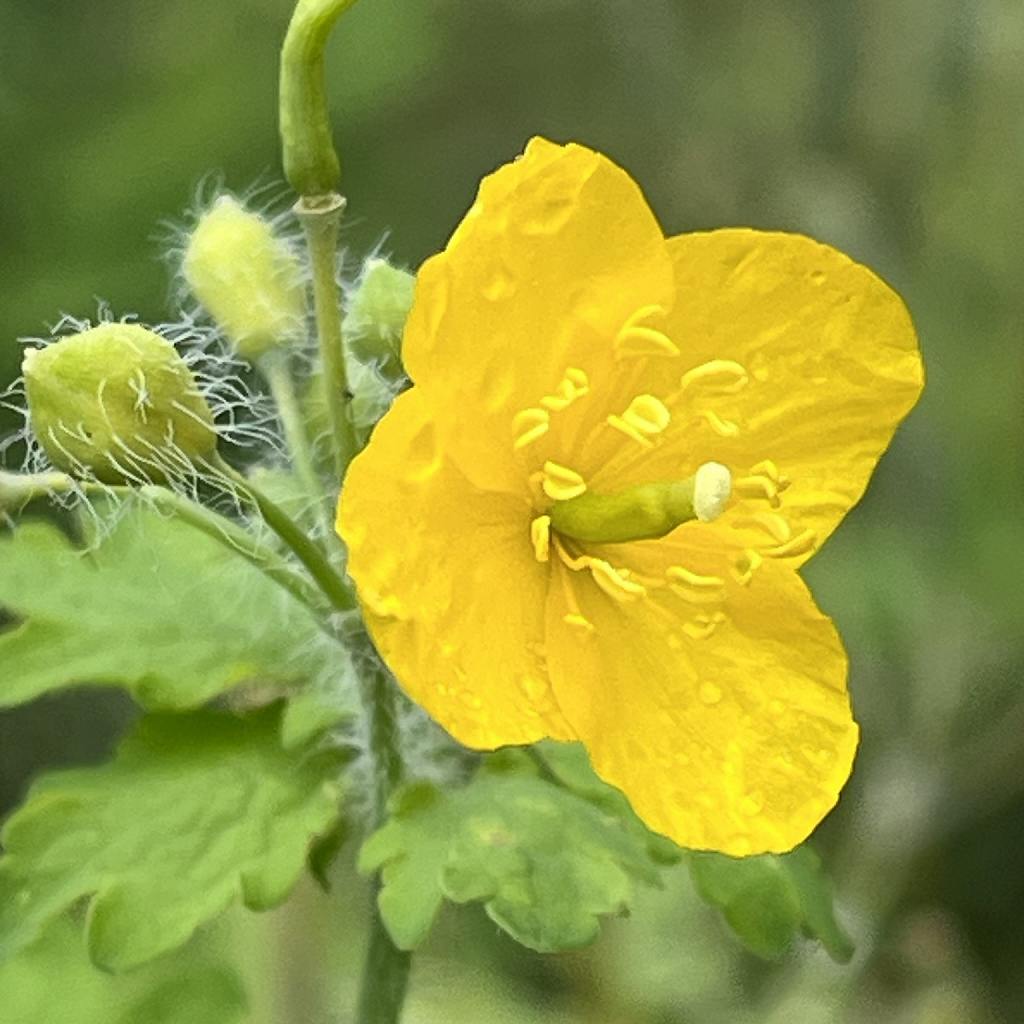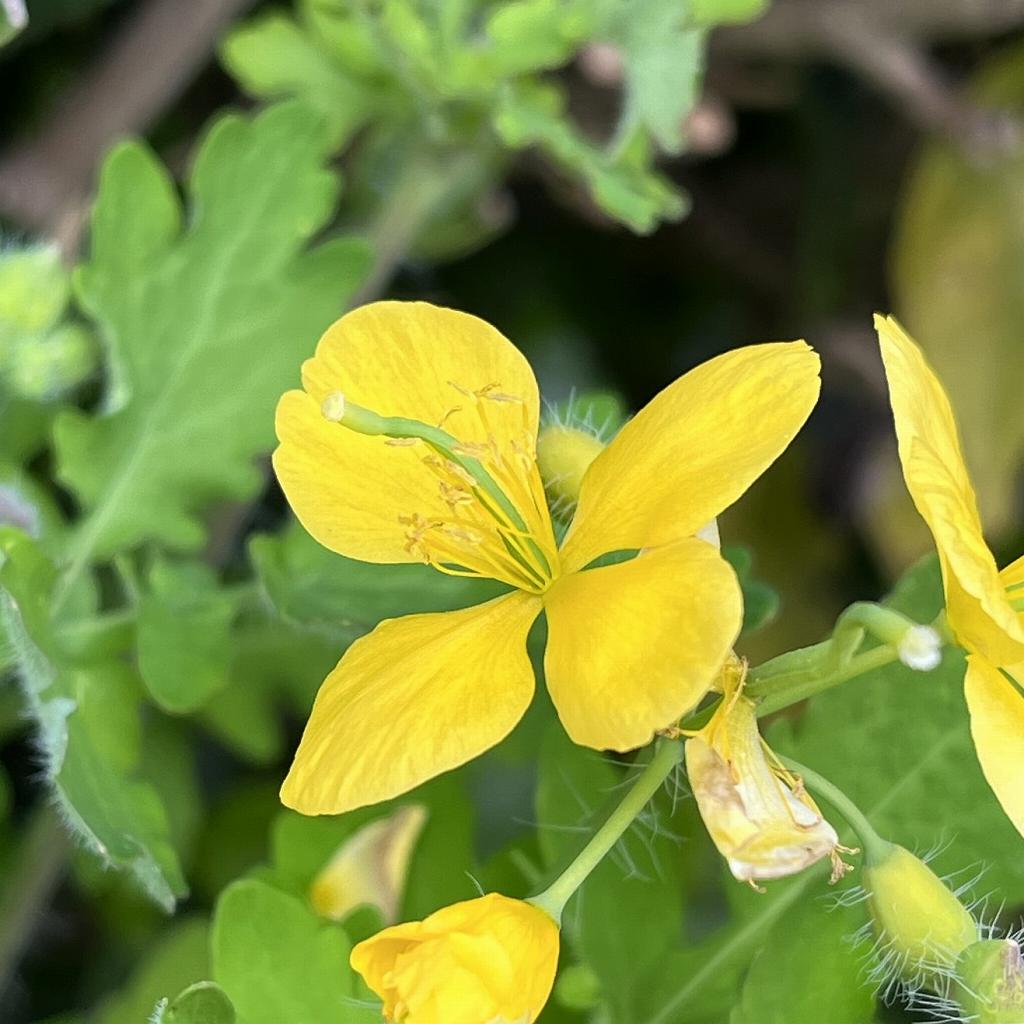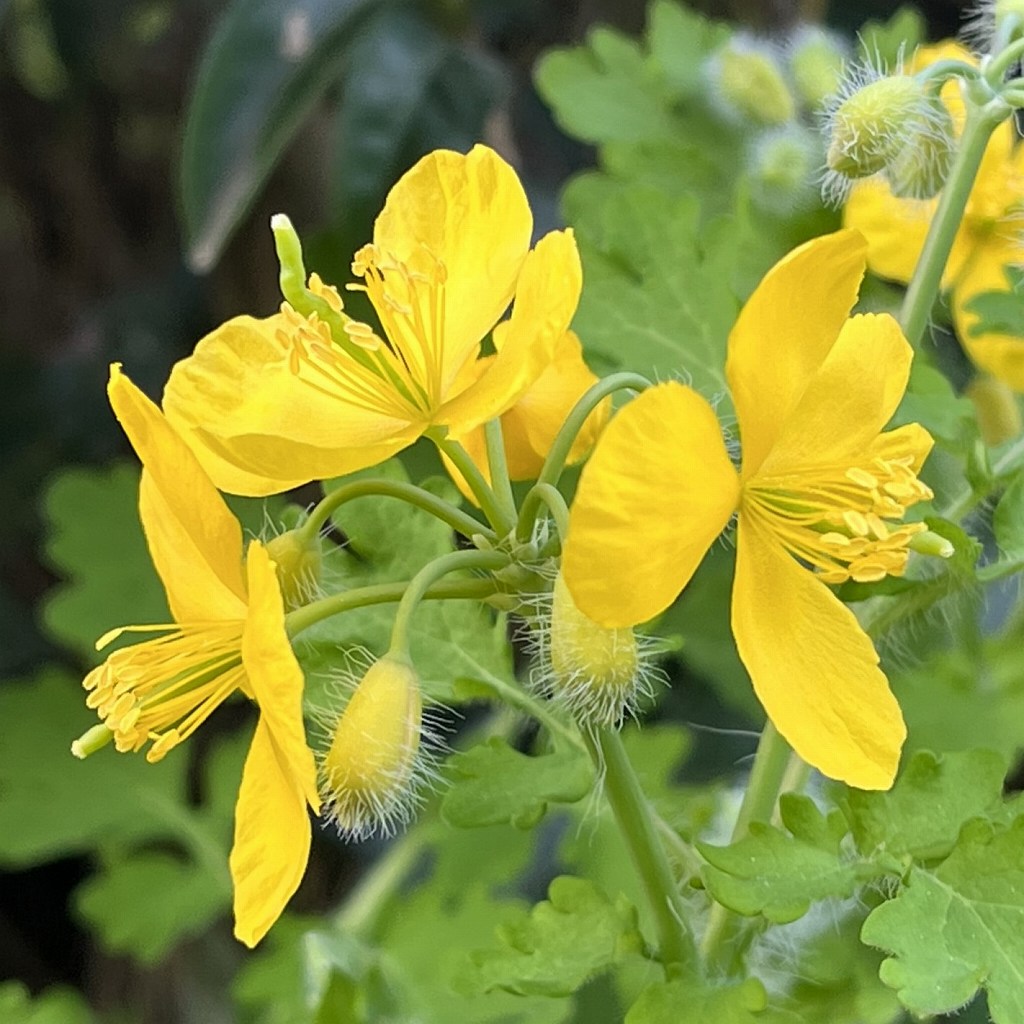クサノオウは、茎や葉を傷つけると黄色の乳汁が染み出るので「草の黄」。鮮やかな黄色の花を咲かせる、古くからの薬草であり、毒草です。
The Japanese name of Greater Celandine means a grass that exudes yellow milky juice when the stems and leaves are damaged. It is a medicinal herb and poisonous plant that has been used since ancient times with bright yellow flowers.
【仮名】クサノオウ
【和名】草の黄, 草の王, 瘡の王
【英名】Greater Celandine
【学名】Chelidonium majus
【誕生】07/ 26
【開花】04, 05, 06, 07月
【花色】Yellow



クサノオウ
クサノオウの概要
クサノオウはケシ科の多年草です。日本では北海道、本州、四国、九州に、国外では樺太、朝鮮半島、中国に分布し、基準変種の「洋種草の黄」は欧州、北アフリカ、西南アジアに分布。陽当たりの良い野原で自生し、鮮やかな黄色の花を咲かせる、古くからの薬草であり、毒草です。
クサノオウの名前
クサノオウの名前の由来は茎や葉を傷つけると黄色の乳汁が染み出るので「草の黄」、多くの病気に用いられたので「草の王」、とりわけ皮膚疾患を癒したので「瘡の王」。ラテン語の属名ケリドニウムは「燕」という意味で、この乳汁で雛鳥の視力を高めたという逸話に由来します。
クサノオウの姿形
クサノオウの茎は中空で柔らかく、葉は不規則な切れ込みが入って互生。茎と葉は縮毛が生えて白色を帯びます。花は黄色の花弁が4枚、雄しべがたくさん、雌しべが曲がりくねって緑色。花後の蒴果は熟すと裂けて黒色の種子が落ち、付着した種子枕によって蟻が遠くまで運びます。
クサノオウの薬用
クサノオウは古くからの薬草。全草を乾燥させた生薬「白屈菜」は煎じ液が湿疹、疥癬、イボなどの皮膚疾患に用いられました。また、細かく刻んで焼酎に漬けた葉が打撲、腫れ物、虫刺されなどに。黄色の乳汁には消炎・鎮痛作用のあるケリドニンなどのアルカロイドが含まれます。
クサノオウの毒性
クサノオウは古くからの毒草。黄色の乳汁には、皮膚が触れると炎症を引き起こすプロトアネモニンなども含まれます。もし、茎や葉を誤って食べると胃腸がただれ、嘔吐や下痢のほか、身体の痺れも。さらに摂取量が多いと昏睡したり、呼吸麻痺を起こし、死に至る恐れもあります。
Greater Celandine
Greater Celandine is a perennial plant of the Papaveraceae family. The variety Asiaticum is distributed in Hokkaido, Honshu, Shikoku, and Kyushu in Japan, and Sakhalin, the Korean Peninsula, and China outside Japan, while the variety Majus is distributed in Europe, North Africa, and Southwest Asia. It is a medicinal herb and poisonous plant that has been used since ancient times, growing wild in sunny fields and producing bright yellow flowers.
The Japanese name Greater Celandine has multiple meanings. A herb that oozes yellow milky juice when its stems and leaves are damaged, a medicinal herb used for many ailments, and a medicinal herb that heals skin ailments. The genus name Chelidonium in Latin means “swallow” and comes from the anecdote that mother birds enhanced the eyesight of their chicks with this milk.
The stems of Greater Celandine are hollow and soft, and the leaves are irregularly lobed and alternate. Stems and leaves are hairy and whitish. The flower has 4 yellow petals, many stamens, and long green pistils. The post-flowering capsule splits when ripe and drops black seeds, which are carried far away by ants attracted to the attached elaiosome.
Greater Celandine is an ancient herb. A decoction of herbal medicine made by drying the whole plant was used for skin diseases such as eczema, scabies, and warts. In addition, finely chopped leaves soaked in shochu are good for bruises, boils, and insect bites. The yellow milk contains alkaloids such as chelidonine, which has anti-inflammatory and analgesic effects.
Greater Celandine is an ancient poisonous plant. The yellow milk also contains protoanemonin and other substances that cause irritation on contact with the skin. If you eat the stems and leaves by mistake, you may experience gastrointestinal ulcers, vomiting, diarrhea, and even numbness. High doses can cause coma, respiratory paralysis, and even death.


